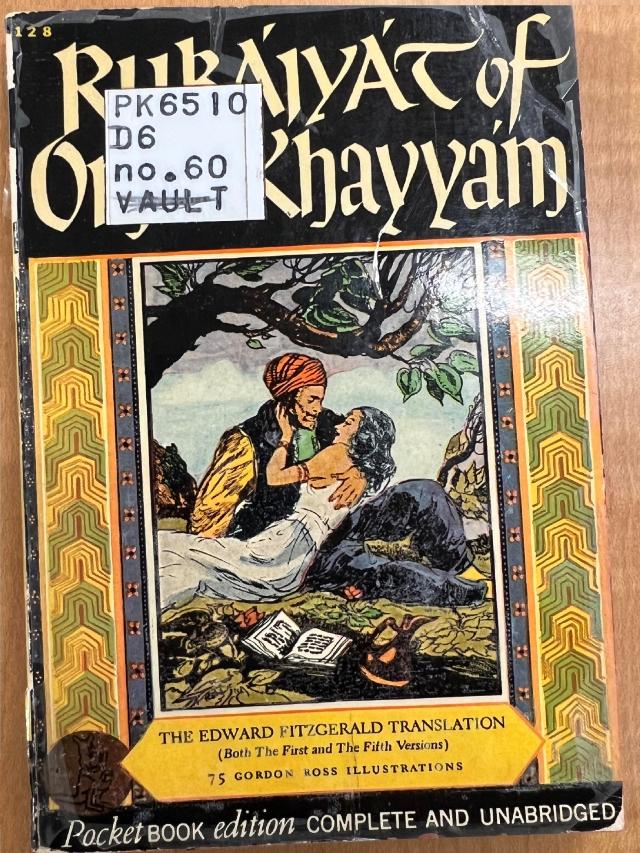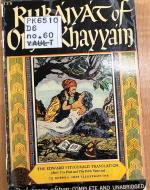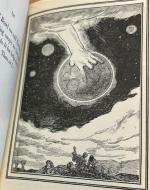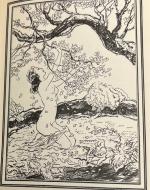Created by Brontae Sodeman on Mon, 04/17/2023 - 15:44
Description:
The edition of the Rubáiyát of Omar Khayyam I chose is from 1941, illustrated by Gordon Ross by Pocket Books inc. Being published by a pocket book company, the edition is on the smaller side though the cover assures it’s complete and unabridged. This edition includes the first and fifth translation by Edward Fitzgerald. The first translation includes illustrated pages paired with the stanzas, examples of which I have included. The style of Fitzgerald's quatrain's are similar to Khayyam's original idea the stanzas being able to stand alone as well. This is highlighted in this edition by placing only one quatrain on each page, paired with an illustrated drawing. The approximately 200 page book includes 75 total illustrations.
The cover (Image 1) depicts a dramatized version of one the romantic stanzas from within the Rubáiyát.The border illustration is arabesque like to replicate the sense of the foreign and highlight the aestheticism in the center of the cover. Gordon Ross employs a realist art form to interpret the stanzas and the cover is in color despite the inside illustrations being in black and white. The cover hints at the materialist structures of Fitzgerald's translation. The couple are surrounded by foliage with wine by their side, a book and flowers. The poem begs us to drink, since we don't know many answers but wine and death.
Within the first translation’s illustrations, are what I can assume are Gordon Ross’s interpretations of the text. This is demonstrated by the bowling ball (Image 2) to depict the bowls from the Rubáiyát stanza LII. This interpretation is interesting because the "bowl" is often seen as a cup or even a pot. The lovers from the cover are in this scene as well, stargazing, this could be a nod to Omar Khayyam’s experience in astronomy. This illustration romanticizes and takes some liberties with the elements of the poem and interpretation of the words.
Some of the illustrations show us variations of “the Orient” that are fantasized about in Fitzgerald’s translation. In Image 3, a woman is naked around Japanese cherry blossoms. Though many of the drawings are in black and white, she is noticeably stark against the page but free and uninhibited. This expresses the sumptuous nature of the poetry and the sensual tendencies to indulge that it directs readers to. This illustration highlights the ability to seperate meanings from the collection of stanzas in the Rubáiyát. There's an ability to escape the parameters of their own society through this poetry and imagery that served many people purpose and meaning for centuries.
Copyright:
Associated Place(s)
Part of Group:
Artist:
- Gordon Ross




